Old Tughlaq Dynasty coins for Sale
The third dynasty of Delhi Sultans known as the Tughlaqs came to power in 1320 AD and ruled till about 1412 AD. Its first ruler, Ghiyasuddin Tughluq, followed the pattern of coinage and issued coins in all four metals: gold, silver, billon and copper. He also issued some coins of an entirely new type to celebrate his conquest of Telingana in 724-25AH(1323-24AD). The name of the province Mulk-e-Tilangana is a mint name. His son Fakhruddin Juna, better known as Muhammad bin Tughlaq, surpassed his predecessors in the execution of coins, especially in calligraphy. One of the outstanding features of his coinage was the elaboration of the mint system. His coins are known to have been struck at Delhi, Darul-Islam (Randhampur), Dhar, Lakhnauti, Satgaon, Sultanpur, Mulk-e-Tilangana and Tughlaqpur (Truhat). 725-727AH (1325-1327AD) He issued coins from Deoghir under the name of Qutbabad. In 727AH (1327AD) the name Deogir was reintroduced for a short period on coins. 728AH 91328AD), which was given an entirely new name of Daulatabad. Thus in his time no less than nine mints were in operation.
The earliest and most curious coins of the second ruler, Muhammad Tughluq, bear the name of his father, whom he murdered to usurp the throne. They also bear the title al-Sahid (The Martyr) in addition to the super inscription of Ghiyasuddin Tughluq. Perhaps these coins were issued as a hypocritical step calculated to clear his name from crime rather than honoring his father's memory. These coins were released in the first three years of his reign. He later issued coins under his own name and reintroduced the Kalima, which had been rejected from the coinage after Iltumish. It became a permanent feature of the inscription on Muslim coins in what is now India for some time. Muhammad Tughlaq will always be remembered for his experiments with other aspects of coinage. He experimented with weights first. His earlier coinage in gold and silver retained the 170 grain weight standard of his predecessors. He subsequently issued gold dinars of 201.5 grains and silver adlis of 144 grains, the former one-sixth heavier and the latter the same amount lighter. In 728AH (1328AD), a lower weight relative to gold was introduced in the South Indian coins of Daulatabad and Sultanpur. Except for a few coins from Bengal, gold dinars were discontinued after 729 (1329AD), and the old 170-grain tankas were issued in the subsequent period. Muhammad's silver coins were scarcer than gold. The silver tanka and the atli appear to have been in circulation simultaneously during the first three years of his reign. After 727 AH, Billan Tanga became important. A few billion coins were issued in the earlier period which followed the Khilji weight standard. Next he introduced a new weight of bullion coins, i.e. about 141.7 grains, which was heavier than the Saubisakani coins of the Khiljis and less than the Saubisakani coins of the Khiljis. It probably contained silver in the same proportion as a Khilji coin of this weight and at the value it would have been. But from the Tabaqat-i-Akbari, the coin seems to be worth eight dangah-i-siya (black danga), thereby it appears that it was valued in terms of copper dangas during this period.
In 730AH (1329-30AD) Muhammad made a risky attempt to issue token coins of copper to replace silver and bullion tanikas. To ensure the success of his experiment, he inscribed an appeal on them. It obeys the Sultan Adhaya al-Sultan faqada Adhaye al-Rahman (O He who obeys the Merciful). He added: Muhar Shud Tariqa Rayaj dar Rajdkar Banda Ummitavara (I believe this stamped Tariqa is current in transactions). But his faith was destroyed. These coins are easy to mint. According to a contemporary historian, with the promulgation of this decree every house became a coin. The Sultan, thereafter, withdrew the issue in 732AH (1331-32AD) and redeemed the genuine and counterfeit coins at his own expense. After the collapse of the forced coinage in 732AD, new billion coins of the original stand of 57.7 grains were issued for a longer period.
In 741AH (1340-41 CE) Muhammad Tughlaq was tormented by doubts about the legitimacy of his sovereignty, which was not recognized by a caliph. The Abbasid Caliphs of Baghdad were finally destroyed by the Mongols in AD 1258. So, after serious investigations, he learned that there was a demon in Egypt who styled himself as Al-Mustaqbi-Billah. He sent him a humble petition asking for his recognition, and at once substituted the name of the Caliph for his own on the coins of his empire. Al-Mustaqfi, however, had already died in 740AH. In this year, an emissary of the reigning second Caliph al-Hakim granted Muhammad the title of Nasir Amir-al-Momnin. Al-Hakim's name was changed from this time on to all coins issued in billon.
At least twenty-five varieties of Muhammad's billon coins are known. They seem to have two different standards, one used in Delhi in the north and another in Daulatabad in the south. In the former the silver tanka was divided into forty-eight and in the latter into fifty jitals or kani. Copper coins are of some twelve types. Most of them are small and of no particular interest.
Firoz Tughluq, Muhammad's successor, enjoyed a peaceful reign of thirty-seven years. But he is not a soldier. The governor of the rich Deccan soon revolted, and the governors of the other provinces followed his lead. As a result, the provinces collapsed and became independent kingdoms during the tumultuous reigns of Pheroes' successors; thus, within a few years the dominion of the Delhi Sultans was reduced to little more than the district around the city. The ruins were completed in 1398 AD when Timur's marauding army swept across India and captured the capital. Under these conditions, the coin was naturally defaced.
Follow his predecessor's example. Firoz Tughlaq inscribed the name of the Caliph Abdul-Abbas and his two successors, Abdul-Fath and Abdullah, on the obverse. On the reverse, he put his own name with the titles Saif Ameer-ul-Momnin Abu-al-Muzaffar. During the reign of Muhammad bin Firoz, the real name of the caliph was changed to al-Imam al-Momnin (Supreme Leader of Islam, Commander of the Faithful). The gold coins of Firoz Shah are the most common and six types are known, but the gold coins of subsequent rulers are very scarce. The scarcity of silver was very evident during the whole period. However, billion coins are known in greater numbers and were continued by the successors of Feroze Shah. During this period, with few exceptions, the name of Delhi appears on the coins.
After the death of Mahmud, the last ruler of the Tughluq dynasty, the nobles of the court gave the throne to Daulat Khan Lodi, who was the military governor of Doab. He ascended the throne in 1413 AD. But soon he had to surrender it to his powerful rival Khizr Khan, who founded the Sayyid dynasty. Both Daulat Khan Lodi and his successor Khizr Khan, Sayyid, avoided exercising the royal prerogative of striking coins in their own names. Their example was followed by the next ruler, Mubarak Shah, during the first eight years of his reign. They wanted to maintain the current types of coins, only changing the dates on them. Bullion and copper coins of Firoz Tughlaq, silver and gold coins of Muhammad bin Firoz, and silver coins of Mahmud bin Muhammad were brought to the requisition. In 832AH (1429-30AD) Mubarak began to mint his own coins. He retained the previous weights for his gold and silver coins. He did not issue the billon, but gave a new weight of 86 grains to the copper coins. Type of Tughlaq period coins. His successor, Muhammad, son of his brother Farid, resumed minting of billion coins of the previous weight standard. Only a few coins of the last ruler of the dynasty, Alam Shah, are known.
Ghiyath al din Tughluq I |
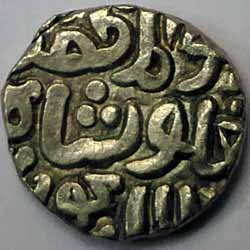 |
 |
Ghiyath al din Tughluq I Metal: Bullion Price: 450 + Shipping 70 Contact WhatApp: 9150640650 |
1 Yakgani Ghiyath al - Din - Tughluq |
 |
 |
1 Yakgani Ghiyath al - Din - Tughluq Metal: Bullion Price: 350 + Shipping 70 Contact WhatApp: 9150640650 |
1 Yakgani Ghiyath al - Din - Tughluq |
 |
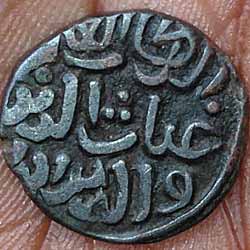 |
1 Yakgani Ghiyath al - Din - Tughluq Metal: Bullion Price: 350 + Shipping 70 Contact WhatApp: 9150640650 |
Ghiyath Al din Tughluq I |
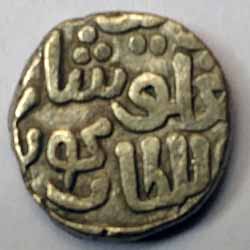 |
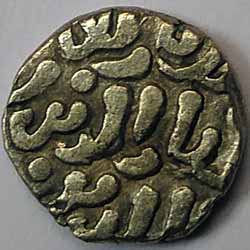 |
Ghiyath Al din Tughluq I Metal: Bullion Price: 350 + Shipping 70 Contact WhatApp: 9150640650 |
1 Tanka Firuz Shah Tughluq |
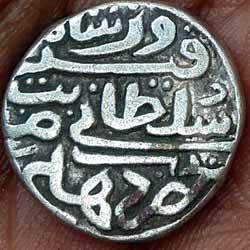 |
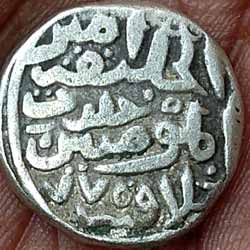 |
Firuz Shah Tughluq Metal: Bullion Price: 650 + Shipping 70 Contact WhatApp: 9150640650 |
Firuz Shah Tughluq |
 |
 |
Firuz Shah Tughluq Metal: Bullion Price: 450 + Shipping 70 Contact WhatApp: 9150640650 |
|
|
| Mamluk or Slave Dynasty |
| Lodi Dynasty |
| Suri Empire |
| Khiljis Dynasty |
Quick Enquiry
*** For Buying and selling quires you can contact us to this Mail Id: gkarthikeyan2k@yahoo.com ********* Contact Us